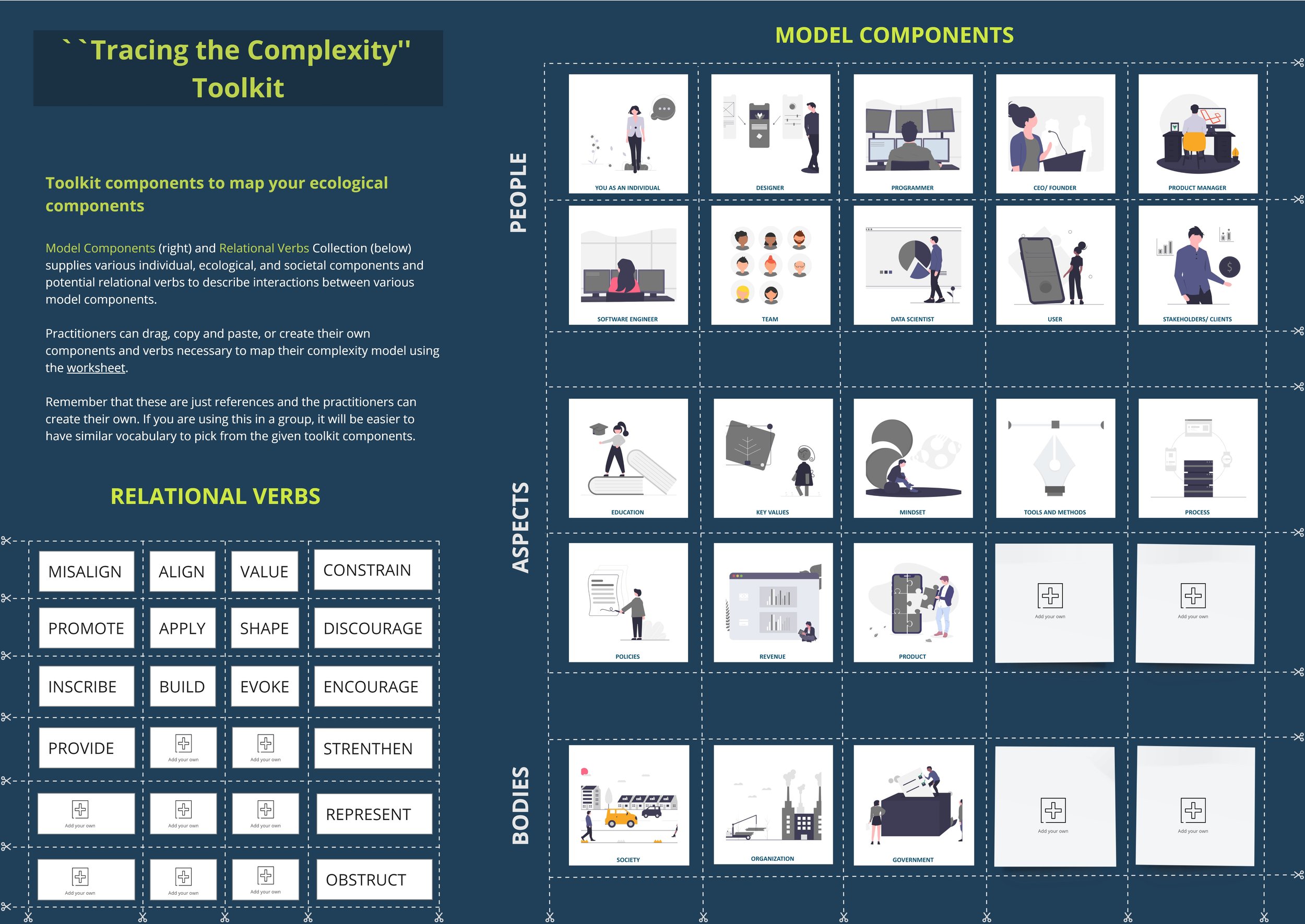Tracing the Complexity
''Tracing the Complexity'' is a mapping toolkit that allows practitioners to map an ecological complexity model consisting of various individual, organizational, or societal factors using a toolkit provided to them. This activity seeks to describe the ethical responsibility of practitioners at ecological (E) level in the A.E.I.O.YOU model.
“I want to see my ethical position within my organization map.”
30 - 45 minutes
Toolkit: Model components + Worksheet,
Pens, Post-its.
Familiarize yourself with Model Components to envision all your ecological factors such as roles, aspects, processes, bodies, etc.
Map all the relevant Model Components to create a version of a complexity model based on your everyday work in your organization on the Worksheet.
**You can refer to the questions listed on Worksheet or on the right to help you with mapping the complexity.
Identify Relational Verbs as (required) to to connect different components as you are mapping.
Once you finish, start the Marking Activity
Mark where most ethics-related: knowledge lies (in Green), decision making lies (in Pink), tensions occur (in Blue), and support is needed (in Red).
Reflect on the activity and provide feedback to the researcher.
Steps
Some questions you can ask yourself as you are mapping:
Did you forget any model components from the given list?
Are there any other model components that I can add to the existing list?
How do you see the two identities playing along?
How do these two similar components in two sections relate to each other?
Where can you draw a connection if you have to draw an arrow between those two sections/ components?
Why did you place this component under this section (individual, within organization, beyond organization)?
How can this interaction relate to the product/user/values you are creating/ wanting to apply?
+ Create your reflective questions for yourself/team
Explore further by…
You can explore this schema further by engaging with variations of this toolkit.
V1 - Version 1
Do you want to become aware of your company/ team and learn about the various ethical aspects you need and have to be prepared for?
You feel reflective, you want to do a self-reflection in your current team/ company on the ecology to learn ethics-focused supports, tensions, sources, etc.
V2 - Version 2
Did you recently change your company/ teams/ project and you want to just reflect about the whole change towards your ethical responsibility?
You have recently changed your company and you want to evaluate your current company with the past and contrast ethical supports you might need in the process and the whole map of who are the “others” involved in ethical decision making.
V3 - Version 3
Are you looking for some team-based changes towards ethical decision making?
In your team or company, you want to do a quick activity in mapping the ecology as a group to identify and ideate how you would like to change (or contrast) your current practices to improve ethical decision making. This can be a change in team practices, more ethics-focused talks, clients training/ proposals, etc.








![Mapping + Marking Activity done on the worksheet. For example, [Red marking] identifies the ethics-focused supports needed by the practitioner](https://images.squarespace-cdn.com/content/v1/5e28840cd09fa0544a9bca0b/41ce9f5b-9bec-4e1a-af4f-96513c21de7c/MCT+-6.jpg)




